3 Easy Ways to Increase Iron Absorption in Your Baby
- Why iron is important to your baby's developing body but why breastmilk alone will not meet your baby's iron needs once it's time to start solid foods
- The different types of iron containing foods out there and 3 easy ways to use food to help increase your baby's iron absorption
- How to know if you're actually offering your baby enough iron...spoiler alert: there's a test and not enough parents are asking for it
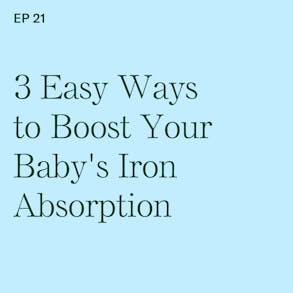
LISTEN TO THIS EPISODE
Episode Description
Iron is helpful for your baby’s growing body. Knowing how much iron your baby needs and what foods have iron are important; but there are a few simple tweaks you can make that will help your baby absorb more of the iron your baby is eating.
In this episode you will learn why babies need iron, how much iron babies need and good sources of iron from both animal and plant foods. I also share 3 easy ways to increase your baby’s iron absorption and ideas about testing iron levels so you know if your baby is getting and absorbing enough iron.

Links from This Episode
- Program: Baby-Led Weaning with Katie Ferraro program with the 100 First Foods™ Daily Meal Plan, join here: https://babyledweaning.co/program
- Baby-Led Weaning for Beginners free online workshop with 100 First Foods™ list to all attendees, register here: https://babyledweaning.co/baby-led-weaning-for-beginners
Resources and Research
- Baker, R., Greer, F.R. Clinical Report: diagnosis and prevention of iron deficiency and iron-deficiency anemia in infants and young children (0-3 years of age). Pediatrics. 2010; 126:1040-1050.
- Brittin, H C, and C E Nossaman. “Iron content of food cooked in iron utensils.” Journal of the American Dietetic Association vol. 86,7 (1986): 897-901.
- Cameron, S. L., Taylor, R. W., & Heath, A. L. (2015). Development and pilot testing of Baby-Led Introduction to SolidS--a version of Baby-Led Weaning modified to address concerns about iron deficiency, growth faltering and choking. BMC pediatrics, 15, 99.
- Daniels, L., Taylor, R. W., Williams, S. M., Gibson, R. S., Fleming, E. A., Wheeler, B. J., Taylor, B. J., Haszard, J. J., & Heath, A. M. (2018). Impact of a modified version of baby-led weaning on iron intake and status: a randomised controlled trial. BMJ open, 8(6), e019036.
- Khambalia, A.Z., Zlotkin, S. Iron. In: Duggan, C., Watkins, J.B., Walker, W.A. (eds.). Nutrition in Pediatrics, 4th ed. Hamilton, ON: BC Decker Inc., 2008:83-98.

Latest Episodes
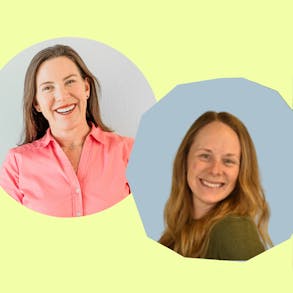
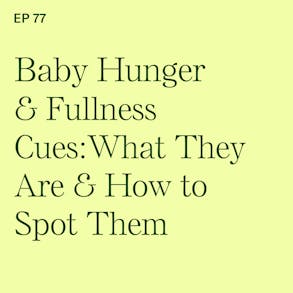
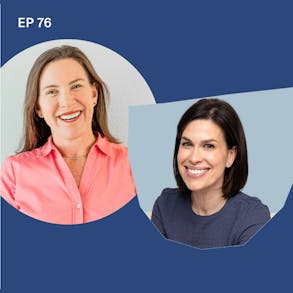
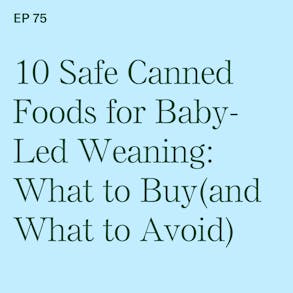
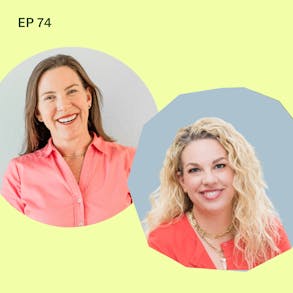
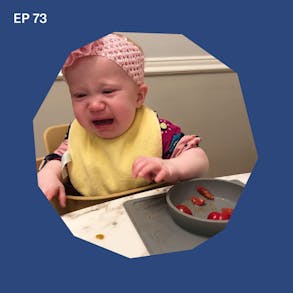
Hungry Root (0s):
You know that feeling when dinnertime rolls around and you have no idea what to make. That is me literally every night I feel like between work and life and kid sports, the feeding my own family stuff, grocery shopping, meal planning, it always just seems to fall to the bottom of my to-do list. But that has all changed thanks to Hungry Root, which is the easiest way to eat healthy without the stress. Hungry Root is more than just a meal delivery service. It's a personalized grocery service that also provides easy to make meal options. So instead of sending pre-portioned meal kits like some of the other brands do, hungry Root instead fills your cart with a mix of groceries and meal ingredients based on your personal preferences and dietary needs. So Hungry Root is basically like having a personal shopper and a dietitian all in one. They take care of your grocery shopping and recommend healthy, delicious foods that fit your tastes, your nutrition preferences, and your health goals. So whether you're looking for high protein meals, gut-friendly options, or dairy-free and gluten-free choices, hungry Root has got you covered. And get this, every meal can be made in just 15 minutes or less. That is exactly what I need at the end of a busy day. I am so excited to try my first Hungry Root box because they don't just send meals. They also have smoothies and snacks and salad kits. They've got ready to eat meals, even sweets, and they use only high quality ingredients. There's no artificial sweeteners, no high fructose corn syrup and no preservatives. I will keep you posted once I dive into my first box, but if you're like me and you wanna simplify mealtime right now, you've got to try Hungry Root. I think you're gonna be as excited about it as I am. And right now you can get 40% off your first box plus a free item in every box for life. Just go to hungry root.com/weaning and use the code weaning at checkout. That's Hungry root.com/WEANING. Same code weaning for 40% off your first box and a free item for life. Go check it out. I can't wait to hear what you think.
Katie Ferraro (1m 59s):
And the research shows us that there's no higher risk of Iron deficiency with Baby-Led Weaning. In fact, a baby-led approach to complimentary feeding from the research shows us it does not appear to increase the risk of Iron deficiency in infants, but that only holds true when their parents are being given advice to offer high Iron foods with each meal. So if you're doing Baby-Led Weaning, but you're doing it the lazy way with just fruits and vegetables, and you're only offering those simple starter foods like avocado and banana and sweet potato, If you're not doing all of the whole grains and you're not doing all the different types of protein foods and you're not doing the allergenic food categories, then your baby's not going to be getting adequate Iron from their food. So it is possible, but the key is doing a variety of Iron containing foods from lots of different sources with some of those fruits and vegetables that will give your baby that vitamin C that helps increase Iron absorption.
Katie Ferraro (2m 48s):
Hey there. I'm Katie Ferraro, registered dietitian, college nutrition professor and mom of seven specializing in Baby-Led Weaning. Here on the Baby Led Weaning with Katie Ferraro podcast. I help you strip out all of the noise and nonsense about feeding, giving you the confidence and knowledge you need to give your baby a safe start to solid foods using Baby-Led Weaning. You've probably heard that Iron is a very important nutrient for babies, but did you know that just offering Iron rich foods is not always enough the way that you prepare and serve those foods? It actually can make a pretty significant difference in how much Iron your baby absorbs from the foods that they are eating.
Katie Ferraro (3m 30s):
So Iron plays a very significant role in our baby's growth, in their brain development, in their energy levels, but not all Iron is absorbed equally. In today's episode, I'm going to share three easy research backed ways that you can boost your baby's Iron absorption using simple tweaks to the foods that you're already offering them. So today we're going to be talking about why babies need Iron and how much they actually need. I'll explain the difference between heme Iron, so that's the type of Iron we find in animal foods and non-heme Iron, the one from plant-based sources. And then I'll share three super simple strategies that you can start using today in order to help maximize the Iron that your baby is getting from solid foods. If you like learning about food and science and how they intersect as your baby is making this transition to solid food, please be sure to follow this podcast.
Katie Ferraro (4m 18s):
I introduce two episodes each week, so I do a solo Baby-Led Weaningtraining episode every Monday, and then I do a longer interview episode with other feeding experts on Thursday. So please follow the Baby-Led Weaning podcast wherever you're currently listening to or watching this so that you can get notified each time an episode is live. And if starting solid foods is totally new to you or you're not sure what this whole Baby-Led Weaning thing is all about, the best place to get started is my free online workshop. It's called Baby-Led Weaning for Beginners. Inside of this workshop, I'm gonna take you through what foods to offer at the beginning, how to prepare them safely. And everybody on this free training gets a copy of my original 100 First Foods list, so you will never run out of ideas of different foods including Iron foods that your baby can eat.
Katie Ferraro (5m 3s):
So you can sign up for the workshop at babyledweaning.co/workshop. You can take it right now later today when your baby naps tomorrow, whatever works for you. And if you've already gotten that a 100 First Foods list and you're ready to start working your way through it, or you've started on a few simple starter foods and now you're feeling stuck, I would love to have you join me inside of my signature online program called Baby-Led Weaning with Katie Ferraro. This is packed with videos and recipes and instructions on how to make all of the hundred foods on the 100 First Foods lists safe for your baby's age and stage. And If you are one of those people that doesn't even wanna think about what food to feed your baby next, that program also contains my 100 First Foods Daily Meal Plan. It's 20 weeks of done for you meal plans, and you can check out that program at babyledweaning.co/prgram.
Katie Ferraro (5m 49s):
Now, I like to start each of these mini training episodes with a Baby-Led Weaning tip of the day. And here's my tip for you. When you're picking out foods your baby can eat, if those foods come in a package that have a label on it, flip it over, scan to the bottom under the dark black bar, that's where the micronutrients live. And micronutrients are vitamins and minerals. Iron is a mineral and Iron is listed on the food label. And when we see foods that contain one milligram of Iron or more per serving, that's a food that I like to call an Iron food. Okay? That's a pretty significant amount of Iron for a baby to eat. Now of course, your baby is not going to eat the whole adult portion size that is listed, but reading food labels can be a little bit confusing.
Katie Ferraro (6m 31s):
And when it comes to food label, quote unquote rules in the United States, in order for a food to be labeled high in Iron, it has to have 20% or more of the daily value, the DV for Iron. So a good source of Iron. So If you see the front of the package, it says this food is a good source of Iron like some breakfast cereals are. A good source means it has 10 to 19% of the daily value and the daily value, if you're like a numbers person, the daily value for Iron on food labels is 18 milligrams, but that's per day for adults. And again, your baby, especially if they're just starting out, is not going to eat a full adult portion size. Okay? So 20% or more a quote unquote high Iron food, that's a food that'll have like 3.6 milligrams of Iron or more.
Katie Ferraro (7m 12s):
But for babies, a good rule of thumb is one milligram of Iron. I call that an Iron food. I don't call that a high Iron food, but on my 100 First Foods list, we have the Iron foods located primarily in the starchy foods category and the protein foods. So you're probably aware If you eat a lot of refined grains, if they're not fortified there can be quite low in Iron 'cause they took out the healthy part of the grain that has the Iron in it. But when you offer your baby whole grains, those are naturally occurring sources of Iron. And we're gonna talk about the difference between plant and animal Iron today. But do know that those whole grains that are in the starchy foods section of the 100 First Foods list, those are great Iron foods, protein foods, that's a separate section of the 100 First Foods list.
Katie Ferraro (7m 52s):
There's 20 protein foods in there, 10 are plant foods, and 10 are animal foods, and those are all Iron foods as well. So as I'll explain today, when we offer our babies a variety of foods, you're naturally going to be offering them Iron foods. But as we all know, Iron containing foods do not magically appear on the table. And if we only offer our babies fruits and vegetables, which are the really simple, easy starter foods, those foods don't contain any Iron. So it is important to be offering your baby a variety of foods. And inside of my program, Baby-Led Weaning with Katie Ferraro, I show you how to make all of those Iron containing foods safe for your baby so you don't have to rely on fortified or processed baby foods to get your baby Iron. But hang tight, because in today's episode, I will explain how the Iron in plant foods differs from the Iron in animal foods, okay?
Katie Ferraro (8m 37s):
And how you can actually help your baby meet their Iron needs even if your family doesn't eat a ton of animal foods like meat. All right. So lemme tell you a quick story. I had a mom who was in my program recently who was a dietitian. So I have a program for parents and a program for dietitians. If you are a dietitian listening, I have a Baby-Led Weaning program that has 15 continuing professional education units for you. You can sign up for that on my website, babyledweaning.co. But at a dietitian mom in the program. So a lot of dietitians, if they're new moms, they're interested in Baby-Led Weaning from like a family standpoint, but they're also interested in learning about it from a professional standpoint and incorporating it into their practice. So this mom, I was talking to row on a one-on-one parent called because she was just so spun up about iron and she had literally gotten to the point where she was trying to measure the amount of foods of a portion that she was serving her baby.
Katie Ferraro (9m 24s):
And that's right there, red flag. There are no such thing as set portion sizes for babies. But again, as dietitians, we sometimes kind of perseverate on the nutrient stuff. And it really doesn't matter when babies are starting solid foods, how much they're eating, what we are, what much more concerned about is giving them the opportunity to learn how to eat. So already right off the bat, she's like counting milligrams and then trying to calculate how many milligrams of Iron she thought her baby was getting from breast milk and add that to the foods. And then she was stressing out that the baby wasn't getting enough Iron. Don't do that. You do not need to do that. There are so many different things that affect Iron absorption rates that there's absolutely no way that you as a lay person or even a clinical registered dietitian could or should be trying to calculate that, okay?
Katie Ferraro (10m 9s):
This was a typically developing quote unquote healthy baby without an underlying medical condition. Do not bog yourself down in the numbers. I actually have another entire podcast episode. It's episode 169 and it's called Iron. Does My Baby Really Need to Eat 11 milligrams of Iron per day? And inside of that episode, I break down exactly why you do not need to be counting and tabulating your numbers. Just if you're looking at a label and you see one milligram of Iron, cool, like look at tofu. Okay, there's more than one milligram of Iron in a portion. Now is your baby gonna eat the whole adult portion size again? Probably not. But at least you're like moving in the path of like, oh, hey, this is an idea of an Iron food that my baby could eat. And tofu is a good example of soy.
Katie Ferraro (10m 49s):
That's a potentially allergenic food. And we want to introduce soy foods to your baby early and often. And when we do that, in addition to giving them that potentially allergenic protein in soy, you're also offering them some Iron as well. So If you walk away with nothing else today from this episode, okay, two things. Don't count your milligrams of Iron 'cause it really doesn't matter. And secondly, offering a variety of foods is going to help your baby naturally achieve their Iron needs. Now in today's episode, I wanna talk about why Iron is important for babies where Iron comes from both the heme and the non-heme sources. I wanna give you three tips for increasing Iron absorption, and then you're gonna walk away with a couple of Iron fun facts as well to wow all your friends with at your next dinner party. So why is Iron important for babies?
Katie Ferraro (11m 30s):
So first of all, what is Iron even? Well, I mentioned previously that's a micronutrient. So that means it's a compound in food that we need in very, very small quantities. Sometimes people discount micronutrients, oh, you need so little of them, but they are so important. And Iron is a mineral that helps carry oxygen in the blood. So you can think of it kind of like a delivery truck, okay? Iron helps move oxygen to different parts of the body so that everything can work properly. So your baby needs Iron for energy, they need it for brain development, they need it for overall growth. But what happens if your baby does not get enough Iron? So if a baby doesn't get enough Iron, then their body can't carry enough oxygen and that can lead to low energy levels. Things like pale skin, slower brain development, higher risk of getting sick so they become immunocompromised.
Katie Ferraro (12m 13s):
And over time, low Iron is particularly harmful because it can cause Iron deficiency anemia that makes babies extra tired and it can even affect their learning and their behavior down the road. Hey, we're gonna take a quick break, but I'll be right back.
Momcozy (12m 32s):
If you have ever struggled with traditional breast pumps, you know the big bulky ones with all the tubes and the wires, then listen up because there is something new that is about to make your pumping life so much easier. Mom, cozy, a brand trusted by over 3 million moms worldwide just launched their air one ultra slim breast pump. I'm so excited about this. My pumping days are behind me, but I do distinctly remember getting pulled over by a cop while driving and pumping with a nursing cover. I was all hooked up to my car charger. The air one would've totally saved my life back in the day. Here's the deal on the air one, this is a pump designed for busy moms on the go. It's ultra slim, discreet. It's finally a pump that will not slow you down. I love that it's super compact and lightweight so you don't have to mess with any more bulky, uncomfortable pumps. The air one fits seamlessly inside your bra for total convenience. It has a transparent top for easy nipple alignment because let's be real adjusting. A pump should not be a guessing game. It is a wireless charging case. You just pop it in, charge it up, and you're ready to go. No tangled cords, no stress. It's also whisper quiet. So it operates at under 45 decibels so you can pump confidently anywhere without worrying about noise. Plus the soft silicone flange makes it so comfortable to use Air. One is available now at target.com or at your nearest target store. That's the mom Cozy Air one ultra slim breast pump. Available now at target.com or at your nearest target store. You can learn more at momcozy.com.
Katie Ferraro (14m 12s):
Now, maybe you've heard about iron transfer during pregnancy and, and If you had a premature baby, preemie babies are at increased risk for Iron deficiency. But then usually if you're working with a medical team, they're all over it. Because here's what happens at the tail end of pregnancy, pregnant mom pushes a big bolus, a big bunch of Iron to the baby, okay? And those Iron storms, those maternal Iron storms, the stores that baby got from mom at the tail end of pregnancy, those are sufficient to meet the baby's needs for about the first six months of life. Okay? Now, if your baby was born premature, think about it. They weren't in there cooking for long enough to actually receive that bolus of Iron. So they're gonna have likely lower levels and we'll be supplementing with Iron in the postnatal state.
Katie Ferraro (14m 52s):
But let's say you had a full term quote unquote healthy baby. Your baby got a bunch of Iron and it's gonna hold them over for about the first six months of life. Now if you're breastfeeding, great, there's not a ton of Iron in breast milk, but we know that the type of Iron in breast milk is particularly well absorbed by the baby's body. If you're formula feeding, you're covered because all infant formula is by law required to be Iron fortified. But around the six month mark, we know that's when babies start to need some outside nutrition from what we call complimentary foods. So this whole idea of starting solid foods, it happens at six months of age for a number of reasons, okay? We wait until your baby's developmentally ready to show you those signs of readiness so that they can sit up on their own and that they have the head and neck control to support a safe swallow, that they've got the trunk strength to support a safe swallow.
Katie Ferraro (15m 39s):
But from a nutritional standpoint, they start to need Iron from outside sources. And so sometimes parents freak out, well, if I'm not gonna do, you know, forced spoonfeeding of white rice cereal to my baby, then where is the baby gonna get the Iron from? And rice, just so you know on its own, is not a high Iron food. But rice cereal in Western food culture has traditionally been used as the medium for which food manufacturers will Add Iron back in. So Iron fortified white rice cereal for a long time has been the kind of go-to first baby food. But we know now that that's not an ideal first baby food. And that's because of the potential for arsenic toxicity. So arsenic is a heavy metal that we don't want in your baby's body, okay? And and rice containing foods preferentially take up arsenic.
Katie Ferraro (16m 19s):
So we don't recommend white rice cereal as a first food. And parents will say, well, if we're not having fortified foods, where does the Iron come from? The Iron will come from the foods that naturally already contain Iron. So where does Iron come from? Your baby gets Iron from breast milk and or formula. And remember, you will continue to offer breast milk and or formula as your baby's primary source of nutrition even after you start solid foods. But let's bring in the solid food piece of it. Okay? When you start introducing solid foods, you're introducing a variety of foods. If you're following my five step feeding framework, we have five different food categories. We do a new fruit on Monday, a new vegetable on Tuesday, a new starchy food on Wednesday, a new protein food on Thursday, and a potentially allergenic food on Friday.
Katie Ferraro (16m 60s):
We do five new foods each week. We do that allergenic food twice on Friday, twice on Saturday, twice on Sunday. So over the course of the weekend, you've been trialing out that one allergenic food to make sure your baby's not allergic to it. And then the following Monday, you start the cycle over with a new fruit, vegetable, starchy food protein, allergenic food, et cetera. So in that way, 20 weeks after starting solid foods, your baby has eaten all of the foods on the original 100 First Foods list. And when you're doing that, if your family eats animal foods, your baby is automatically going to be consuming a variety of both what's called heme based sources of Iron and non-heme Iron. So let me explain the difference between heme and non-heme Iron. Heme Iron comes from animal sources and heme Iron is more easily absorbed by the body compared to non-heme Iron, okay?
Katie Ferraro (17m 45s):
Non-heme Iron comes from plant-based sources, plus heme Iron helps enhance the absorption of non-heme Iron when they're eaten together in a meal. I'll give you some examples of that in a second. Now, some examples of heme Iron foods from animal sources include all of the animal foods that are on the protein portion of the 100 First Foods list. We're talking beef and lamb and pork, chicken, fish, shellfish, eggs. I mean, look at the nutrition facts panel of an egg. If you, If you buy your eggs, I have to buy my eggs. Side note, my brother has chickens now and he's been giving me his eggs and they are like so good to the point that I almost would consider having chickens, but I won't because I have too many children and I don't need chickens. But I love farm fresh eggs, but I don't have them all the time. So when I buy eggs, I buy 'em in a carton. When you look at the back of the carton and it has the nutrition facts panel, you would be surprised if there's about one milligram of Iron in an egg yolk.
Katie Ferraro (18m 32s):
So there's lots of great reasons to offer your baby egg. The white has the protein and that's the potentially allergenic part that we wanna introduce to your baby early and often. But the yolk, that's where the minerals like Iron as well as the fat and some other B vitamins live. So there's benefits to both the egg white and the egg yolk for your baby. But the yolk, that's where the Iron is contained. Now, non-heme Iron, that's the type of Iron found in plant-based foods and as well as Iron fortified products. But when we do baby-led weeding, for the most part, we don't rely on Iron fortified products because we're teaching our babies how to eat naturally containing food sources of Iron. So unlike heme Iron, which comes from the animal foods and is more easily absorbed, non-heme Iron has lower bioavailability, meaning that the body absorbs it less efficiently.
Katie Ferraro (19m 17s):
Now, one of the tips in this episode is that If you pair non-heme Iron foods with vitamin C containing foods or with heme Iron foods, that actually improves the absorption of Iron. So we're gonna come back to that in a second. So some plant-based foods that contain Iron, things like lentils and beans and chickpeas, tofu, dark green leaf vegetables, things like spinach and kale, quinoa, whole grains, nuts and seeds also contain non-heme Iron. So if we're offering our babies a variety, both plant and animal foods, no brainer, don't worry about it. Your baby is going to be getting probably enough Iron because they're also getting it from infant milk and that's breast milk and or formula. But what are the three things that we can do to actually increase Iron absorption? So I teased it just a second ago, but the first thing you can do is to ensure that you're offering your baby enough vitamin C.
Katie Ferraro (20m 4s):
Okay? So some studies have demonstrated that offering vitamin C containing foods can boost Iron absorption anywhere from two to five times when they're consumed with non-heme Iron sources. So let's say you have, you know, some leftover quinoa from dinner last night and you make a little fritter for your baby and you have a little finger food of quinoa, that's a whole grain, that's a plant-based source of Iron though. So that's non-heme Iron. It's not super well absorbed by the body, but there's some Iron in there. If you were to offer some orange slices, let's just say you got some mandarin oranges, maybe a can of no sugar added mandarin oranges, I love those for Baby-Led Weaning 'cause they don't have that pithy white part. You can pick the pithy white part off of regular oranges If you are so inclined and take the seeds out as well. But you've got some oranges that your baby's gonna have the vitamin C in the oranges.
Katie Ferraro (20m 46s):
That's actually going to help your baby absorb the non-heme Iron that is in the quinoa, in that fritter that your baby is eating. So to maximize Iron absorption, it is beneficial to pair Iron rich plant foods with vitamin C rich foods. So let's think of the example of the 100 First Foods list. If you're offering your baby a new fruit on Monday, a new vegetable on Tuesday, a new starchy food on Wednesday, that's starchy food that you're gonna do on Wednesday is very likely going to be a whole grain containing plant-based Iron. And if you're continuing to offer the new food of the day, the quinoa along with familiar foods from previous days, let's say you did strawberry the day before or two days before for the new fruit, you need brussel sprouts for the new vegetable. If you're offering that new food, the quinoa that has the plant-based heme Iron along with the strawberries and the Brussels sprouts, the vitamin C in those fruits and vegetables, that's going to help your baby absorb the Iron from the starchy food.
Katie Ferraro (21m 36s):
Same thing with the proteins. If you did some of the, we have 10 plant-based proteins in the program and on the 100 First Foods list, lots of different beans like we have mong beans and garbanzo beans, black beans, those are great sources of fiber and plant-based protein. But they also contain non-heme Iron doing that in conjunction with a vitamin C containing food. So perfect examples, If you do like a black bean chili, the tomatoes that contain vitamin C in the chili will actually help your baby absorb the non-heme Iron in the beans. If you put meat in that chili, okay, there's gonna be heme in the Turkey or in the beef. Having the vitamin C is gonna help your baby absorb more Iron from that meat as well. Okay? So you don't have to stress about this, but if you're doing a variety of foods, including some vitamin C containing foods, then your baby will be getting that kind of added boost of Iron absorption from vitamin C containing foods.
Katie Ferraro (22m 24s):
And almost all fruits and vegetables are pretty decent sources of vitamin C. You think of yellow lemons and limes and oranges, but really, you know, strawberries, but peppers, potatoes, lots of different foods contain vitamin C. So the first way to boost your baby's Iron absorption is to offer heme and non-heme Iron foods a alongside vitamin C foods. The second thing you can do is to cook with cast Iron. So If you have any cast Iron cookware, like we have cast Iron skillets in my house of a big one, which is super heavy, I have a smaller one, which I tend to use more often because it's not as heavy to lift, but cast Iron cookware can increase the Iron content of food, although the extent varies based on a couple of factors. Okay? So we talk about iron leaching, like some of the Iron actually comes outta the cookware and into the food that you're making.
Katie Ferraro (23m 6s):
So acidic foods, okay, things like tomato-based dishes, they tend to absorb more Iron. Kind of makes sense, right? Because especially if they're vitamin C containing foods like tomatoes, we know that's gonna help with the absorption. Moisture content. Foods that have higher moisture levels tend to facilitate greater Iron transfer cooking duration. If you cook something in your cast Iron skillet for a longer period of time results in more Iron leaching into that food cookware condition. So if there's newer and unseasoned cast Iron pans, they tend to release more Iron compared to like older, really well seasoned ones. Now there's actually, even though it's kind of like, I dunno, cooking lower, not lower. This is a fact that cooking with cast Iron will increase the Iron content of the foods you're already cooking. But the degree to which it has increased, it's actually kind of hard to nail down.
Katie Ferraro (23m 47s):
So I was looking for studies and actually the most recent study of any significance that I could find was a study from 2013 out of a university in India gave a point of reference for the rough degree to which iron's present will escalate. Basically they did like four different Iron rich snacks for children and when they cooked them in cast Iron pots, the Iron content increased by 16.2% compared to snacks that were cooked in like Teflon coated non-stick pants. Hey, we're gonna take a quick break, but I'll be right back
Sierra (24m 22s):
At Sierra discovered top workout gear at incredible prices, which might lead to another discovery. Your headphones haven't been connected this whole time. Awkward discover top brands at unexpectedly low prices. Sierra, let's get moving.
Katie Ferraro (24m 40s):
There's also a product out there called the Lucky Iron Fish. So this is an Iron OT that you add to foods. I remember when I was a Peace Corps volunteer in Nepal. I lived in Nepal for two and a half years after college as a Peace Corps volunteer. And there's a lot of Iron deficiency in Nepal. And as a dietician, I was working in different nutrition programs. We had I'd heard of from some researchers about the lucky Iron fish and actually had the CEO of the lucky Iron fish. He's the founder and CEO Gavin Armstrong. He came on the podcast to talk about how the lucky Iron fish can increase Iron absorption. So he talks a lot about the use of the lucky Iron fish in communities and parts of the world where there's not access to the wide variety of foods that you and your baby have access to here in the United States.
Katie Ferraro (25m 22s):
So a lot of times in certain communities if there's reliance on lower Iron foods, cooking with an Iron fish in the cookware can actually increase Iron. So that is episode 1 4. If you'd like to learn more about how the lucky Iron fish can increase Iron absorption, and I share a couple of recipes that you can make for Baby-Led Weaning using the lucky Iron fish in that episode. So back to the cooking with cast Iron, there's the potential to increase it. Can you cook everything in a cast Iron scale? I mean some families do, but to what degree will it increase Iron? Don't really know. One study showed a 16% increase for some certain snacks. The third thing that you can do to increase your baby's Iron absorption is to include heme, Iron foods.
Katie Ferraro (26m 2s):
Now if your family eats animal foods, this is kind of a no brainer, right? Because you're naturally going to have access to or know how to prepare or be inclined to make foods like meat, poultry, fish, as well as eggs, which I mentioned are a source of heme based Iron. But having that heme Iron in the diet that will help your baby's body absorb more Vitamin C. One of the problems I see families run into is they get really comfortable with offering fruits and vegetables. Okay? They'll do, you know, the simple starter foods like avocado, banana, sweet potato, and then they don't do the starchy foods, they don't do the whole grains, they don't do the protein foods, they're scared the baby's going to choke. They don't do the allergenic foods 'cause they don't know how to prepare them properly.
Katie Ferraro (26m 44s):
And as a result, if they're only offering fruits and vegetables, as wonderful as fruits and vegetables are for the things that they do well, like providing vitamin C and taste and texture, they don't contain any Iron, they also don't, don't contain any protein or some other important nutrients. So babies cannot survive on fruits and vegetables alone. And that's why I really want to encourage you to offer a variety of fruits and vegetables. And that's why I created my five step feeding framework for the five new foods we offer each week. A new fruit on Monday, a new vegetable on Tuesday, a new starchy food on Wednesday, a new protein food on Thursday, and a new allergenic food on Friday. If you follow that pattern, your baby will naturally be getting the Iron containing foods, the heme, the non-heme Iron, as well as the vitamin C, and the other important nutrients plus all of the allergenic foods that your baby needs to be eating and should be eating prior to 11 months of age in order to help lower the risk of food allergy down the road.
Katie Ferraro (27m 36s):
And again, If you would like learning how to make all of the foods from the 100 First Foods list safe for your baby, my program Baby-Led Weaning with Katie Ferraro has a full 100 First Foods content library where you can look at the videos and read the recipes and figure out how to make these foods safe as well as my 100 First Foods Daily Meal Plan. If you don't even want to think about which food to feed your baby next, because I made a 20 week meal plan for your baby. So you don't have to stress about stuff like offering heme and non-heme sources of Iron. And you can sign up for that program at babyledweaning.co/program. It's also linked in the description of this episode. Now I promise a couple of Iron fun facts. I don't like to talk a ton about things that decrease Iron absorption. 'cause then parents get all spun up about trying to leave these things outta the diet.
Katie Ferraro (28m 18s):
But I think in an episode of this nature would be remiss not to mention the fact that calcium does decrease Iron absorption. So sometimes you'll see kind of silly recommendations, oh, you know, try not to feed your baby calcium containing foods when you're also offering Iron containing foods. And it's like, you know, parents already have enough to deal with. You don't need to worry about what to leave out of your baby's diet, okay? Your baby should be having some calcium containing foods, preferably from cow's milk foods because cow's milk is a potentially allergenic food. We want your baby to have those foods prepared safely for their age and stage, and certainly not in place of infant milk, but prior to 12 months of age so that they can help lower the risk of cow's milk allergy down the road. But we do wanna limit whole milk intake for toddlers, okay? Because one of the problems with milk is that it does not contain any Iron and high milk intakes have actually been linked to higher rates of Iron deficiency.
Katie Ferraro (29m 4s):
And that's because milk displaces other nutrient containing foods. So if your toddler is always full of milk and they don't eat the food you're offering, they're not gonna be absorbing Iron 'cause they're not eating the Iron rich foods. Another fun fact about iron is that Baby-Led Weaning does not lead to lower Iron intakes. It does not lead to lower levels of Iron when compared to conventional adult-led spoon feeding. Okay? And we have research that demonstrates that a baby-led approach to complimentary feeding does not appear to increase the risk of Iron deficiency in infants when their parents are given advice to offer high Iron foods with each meal. And that's the kicker there. If you're doing Baby-Led Weaning, but you're just doing fruits and vegetables, your baby will be at increased risk for Iron deficiency.
Katie Ferraro (29m 44s):
But if you're doing Baby-Led Weaningg and you know how to make the Iron containing foods like the starches and the proteins and the allergenic foods safe for your baby's age end stage, you certainly will not have to worry about iron deficiency. One more fun fact, I thought it was interesting to learn that your baby's blood volume will actually double between four and 12 months of age. So remember when you were pregnant, your own blood volume doubled during pregnancy. That's why it's like impossible to meet your Iron needs from diet alone. That's why Iron supplementation primarily done through prenatal vitamins, but in many parts of the world, they just do Iron pills instead of like the full on prenatal because the Iron is so important because your blood volume increases so much. But remember, your baby's blood volume is gonna double between four and 12 months of age and around that six month mark when they start losing some of that maternal Iron stores that they got, that's why we have to be conscientious about offering Iron containing foods to your baby.
Katie Ferraro (30m 36s):
And If you do eat animal foods, try to do both heme and non-heme types of Iron. So to wrap up, If you need a list of foods that contain Iron, get a copy of my original a 100 First Foods list that's free to everybody on my free online workshop, Baby-Led Weaning for Beginners. You can sign up for that at babyledweaning.co/workshop. And If you are ready to get started making those Iron containing foods safe for your baby, check out my program, Baby-Led Weaning with Katie Ferraro. That's at babyledweaning.co/program. Everything from today's episode will be linked up, including all of the research about iron and Baby-Led Weaning. That'll be on the show notes for this episode, which you can find at blwpodcast.com/21. And a special thank you to our partners at AirWave Media.
Katie Ferraro (31m 17s):
If you guys like podcast, the feature, food and science, and using your brain, check out some of the podcasts from AirWave Media. We are online at blwpodcast.com. Thank you so much for listening. Happy feeding. Good luck with those Iron foods and I'll catch you next time.
Safeguarding Sound Science (31m 44s):
Science education is key to creating a successful future, but the challenges have never been greater. I'm Matt Kaplan, host of Safeguarding Sound Science Climate Change edition. Join us for outstanding conversations with the leading researchers, policy experts, and teachers who are fighting to keep misinformation and pseudoscience out of our classrooms and off our screens. Subscribe to Safeguarding Sound Science on Apple, Spotify, Amazon, or wherever you like to listen.
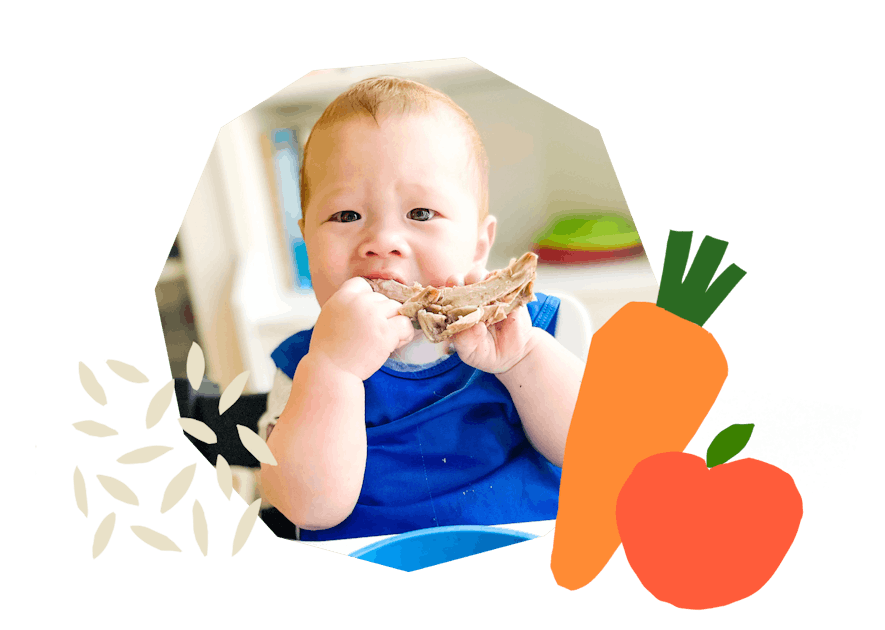
The Program Baby-Led Weaning with Katie Ferraro
A step-by-step digital program for starting solid foods safely and navigating the original 100 FIRST FOODS™ meal plan with baby-led weaning.
 EXPERT-LED, PROVEN APPROACH TO EATING REAL FOOD
EXPERT-LED, PROVEN APPROACH TO EATING REAL FOOD CONCISE VIDEO TRAININGS TO MASTER BABY-LED WEANING
CONCISE VIDEO TRAININGS TO MASTER BABY-LED WEANING 100 FIRST FOODS DAILY MEAL PLAN WITH FOOD PREP VIDEOS
100 FIRST FOODS DAILY MEAL PLAN WITH FOOD PREP VIDEOS
Baby-Led Weaning for Beginners Free Workshop
Is your baby ready to start solid foods, but you’re not sure where to start? Get ready to give your baby a solid foundation to a lifetime of loving real food…even if you’re feeling overwhelmed or confused about this next stage of infant feeding.
Get baby-led weaning recipes and tips delivered to your email inbox.

